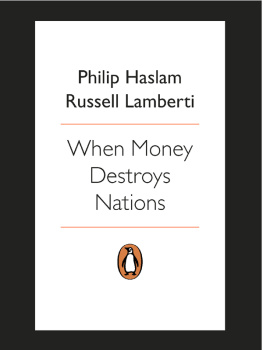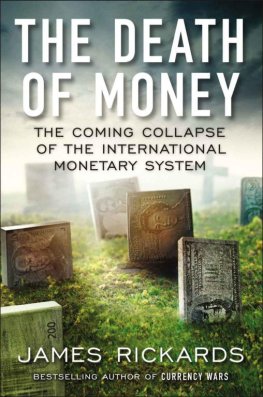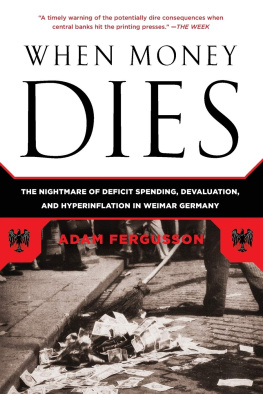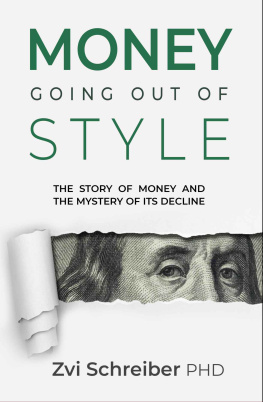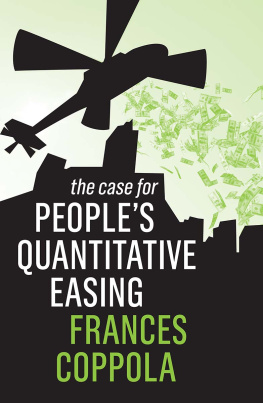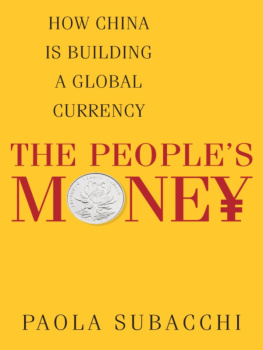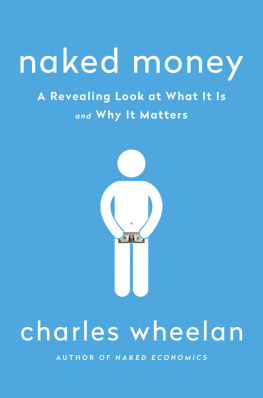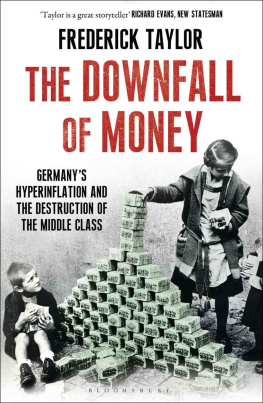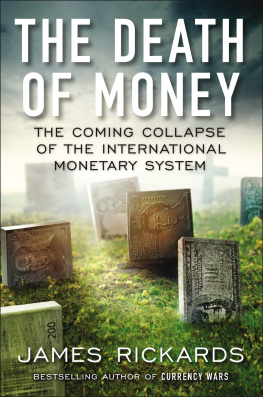Penguin Books (South Africa) (Pty) Ltd, Registered Offices: Block D, Rosebank Office Park, 181 Jan Smuts Avenue, Parktown North Johannesburg 2193, South Africa
To the millions of Zimbabweans who survived hyperinflation.
May this book do justice to the hardships you had to endure.
PRAISE FOR WHEN MONEY DESTROYS NATIONS
The simplicity, clarity and great use of metaphors in this book make When Money Destroys Nations a warning for the rest of the world. It makes me ask: Will the U.S. be next?
Robert Kiyosaki, Educator, Entrepreneur, Investor and Author of Rich Dad Poor Dad
To understand the future you must first understand the past. Haslam and Lamberti have done a great job at documenting the Zimbabwean hyperinflation in an easily readable manner. Even if you havent studied economics or central banking, youll be able to understand what happens when countries print money and why hyperinflation is coming to countries across the world, including the US dollar.
Jeff Berwick, founder and CEO of The Dollar Vigilante
Haslam and Lamberti have produced a fascinating, accessible account of how Zimbabweans actually lived (and died) during the worlds second-highest hyperinflation, one that dwarfed the German hyperinflation of 192223. Yes, the peak daily inflation rate in Zimbabwe in November 2008 was 98% an economic tragedy that Haslam and Lamberti skilfully bring to life.
Steve H Hanke, Professor of Applied Economics at the Johns Hopkins University in Baltimore and director of the Cato Institutes Troubled Currencies Project in Washington DC
An old and reliable adage states that one can learn either from experience or by reading what others have learned from experience. Most people have not lived through a monetary upheaval and have not experienced the disruptions to society when a currency goes bust. So to learn from others, When Money Destroys Nations should be on everyones reading list.
James Turk, founder of GoldMoney and co-author of The Money Bubble: What To Do Before It Pops
We are rarely, if ever, exposed to what it is like to live through a hyperinflation. This is because it is so economically, socially and psychologically damaging. History records numerous runaway inflations, including ones in Germany, France, Russia, China and in Revolutionary America. With the spectre of hyperinflation looming in the future, When Money Destroys Nations is a timely, accessible, and informative contribution to prepare people for the consequences.
Mark Thornton, Senior Fellow of the Ludwig von Mises Institute and a Research Fellow with the Independent Institute
I always appreciate literature that brings economic concepts to non-economists in a simple way that is fascinating to read. It is a measure of their knowledge on both the subject of Zimbabwe and hyperinflation that Haslam and Lamberti have been able to achieve the balance between using anecdotal evidence through countless interviews and a deep understanding of complex economic issues to achieve exactly that. This is a must-read for anyone who cares about holding their civil servants to account, the consequences of bad policies and how to prepare for the fallout.
George Glynos, MD and Chief Economist, ETM Analytics
In When Money Destroys Nations, Haslam and Lamberti have given a vivid account of how the Zimbabwean governments profligate spending, financed by central bank money printing, destroyed the living standards of people who either survived or fled the countrys hyperinflation. Dont repeat the mistake of the millions of Zimbabweans who werent prepared for what lay ahead. Pick up a copy of When Money Destroys Nations and learn about the factors that led to Zimbabwes economic collapse, and use the framework that Haslam and Lamberti provide to help you monitor and understand hyperinflations. Consider implementing some of the authors practical suggestions on how you can protect your family from the effects of a hyperinflationary economic collapse.
Chris Becker, Economist and Founder of the Mises Institute South Africa
Foreword by Leon Louw
This is a splendid book with much to offer lay readers as economists. It is a rare example of scholarly substance combined with accessible narrative and human interest. It explains much more than hyperinflation. Readers experience a roller coaster ride through the ghastly horrors inflicted on entire populations by central bankers and politicians who use money to become diabolical oppressors. It provides disturbing insights into ominous parallels between Zimbabwes hyperinflation and profligate polices that have become increasingly trendy in supposedly responsible countries, including the USA.
It is hard to believe that such manifest madness happens at the behest of seemingly intelligent people.
My colleague and friend, economist Vivian Atud, read the manuscript and said, The book is an easy read for people in all walks of life. She was especially taken by the observation that governments have power and can choose to manipulate monetary policy. However, they have no power or ability to manipulate the outcomes of their policies.
The book has touching stories of how communities rallied to support destitute compatriots, how expatriates sent money and essential supplies to friends and relatives, and how trade was forced back to primitive barter. Tampons and toiletries, like much else, were scarce and used as currency substitutes.
Zimbabwes hyperinflation was much more devastating than its liberation war or the oppression from which it liberated them. The book warns, often with Socratic and rhetorical questions, that money mischief is not easily understood, even by supposed experts. Ingenious disinformation and obfuscation deceives people into thinking perpetrators are rescuers. The US governments profligate response to their government-induced subprime banking crisis, and the responses of Southern European governments to their sovereign debt crisis are prime examples.

